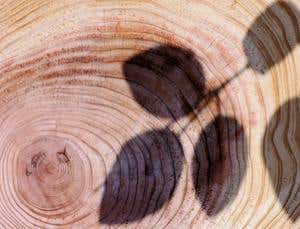Tree rings suggest Roman world was warmer than thought .10 July 2012

Have human CO2 emissions interrupted a long cooling period that would ultimately have delivered the next ice age?
(Image: Gyro Photography/amanaimages/Getty Images)
How did the Romans manage to grow grapes in northern England when most climate studies suggest the weather was much cooler then? We may now have an answer: it wasn’t that cold at all.
Long-term temperature reconstructions often rely on the width of tree rings: they assume that warmer summers make for wider rings. Using this measure, it seems that global temperatures changed very little over the past two millennia. Such studies are behind the famous “hockey stick” graph, created by Michael Mann of Pennsylvania State University in University Park, which shows stable temperatures for a millennium before the 20th century.
Jan Esper of Johannes Gutenberg University in Mainz, Germany, thinks that at least some of those tree rings actually show something else: a long-term cooling trend that lasted right up until the Industrial Revolution. The trend came about because of reduced solar heating caused by changes to the Earth’s orbit known as Milankovitch wobbles, says Esper. His results suggest the Roman world was 0.6 °C warmer than previously thought – enough to make grape vines in northern England a possibility.
Esper and his colleagues say that warmer summers do not necessarily make tree rings wider – but they often make them denser. He studied the density of tree rings in hundreds of northern Scandinavian trees and found that they showed evidence of a gradual cooling trend that began around 2000 years ago.
The finding fits with other proxies for temperature – such as the chemical make-up of air trapped in glaciers and the organic remains in ancient lake sediments – which have also suggested a cooling trend.
Esper’s study is the latest to indicate that temperatures were less stable than originally thought. In 2009, Darrell Kaufman of Northern Arizona University at Flagstaff published evidence, using a range of proxies, that indicated a cooling in the Arctic for most of the past 2000 years
Esper says temperature reconstructions will have to be redone because past studies probably underestimated temperatures during the medieval warm period and other warm periods going back to Roman times. The further back in time, the greater the underestimate would be.
. New Scientist.
Journal reference: Nature Climate Change, DOI: 10.1038/nclimate1589
Blogger: the truth of this means that, logically, those who claim that Climate Change is man-made, are almost certainly wholly wrong in their calculations.
Sun spot activity and the cyclical nature of climate - when added to the mix - make their position almost impossible to maintain.
Let us not forget that CO2 aids plant growth worldwide. CO2 is NOT a poison!
Yet, maintain it they do in spite of the multi-failures in calculations of their computer models.

.jpeg)